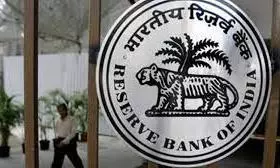DC Edit | RBI may not follow US Fed

The US Federal Reserve has finally slashed interest rates by 50 basis points for the first time in four years to address an underperforming labour market. Though there was an expectation that it would cut the rate by 25 basis points, the Fed has front loaded the rate cut to support the job market aggressively. As the United States is still the financial superpower, the Fed rate cut would widen interest arbitrage and make investors invest in emerging markets, including India, and will force all central banks, including India, to reassess their monetary situation.
Ahead of the US, the Bank of England, European Central Bank and Bank of Canada have already started their monetary easing. India remains in a wait-and-watch mode.
Historically, India has often followed the US Fed’s rate movements. If the RBI decides to slash interest rates, it will be the first time in four years. The last RBI had slashed repo rate was in May 2020. After increasing the repo rate for seven times between May 2022 and June 2023, the Reserve Bank kept the repo rate unchanged at 6.50 per cent.
However, analysts argue that the Reserve Bank of India, whose primary focus for several years has been on controlling inflation, would be unlikely to slash the repo rate in view of stubborn food inflation.
The Indian stock markets, however, reacted to the Fed rate hike with exuberance, with both the Sensex and the Nifty touching record highs. Similarly, the bond market is also expected to get huge dollar inflows through government securities. This will increase India’s foreign exchange reserves and boost rupee liquidity in the domestic market, spiking inflation and also keep lending rates subdued. A weak dollar could also be inflationary as it will make imported goods such as fuel and other items costly. The RBI, therefore, cannot ignore the Fed move and will have to react sooner or later.

